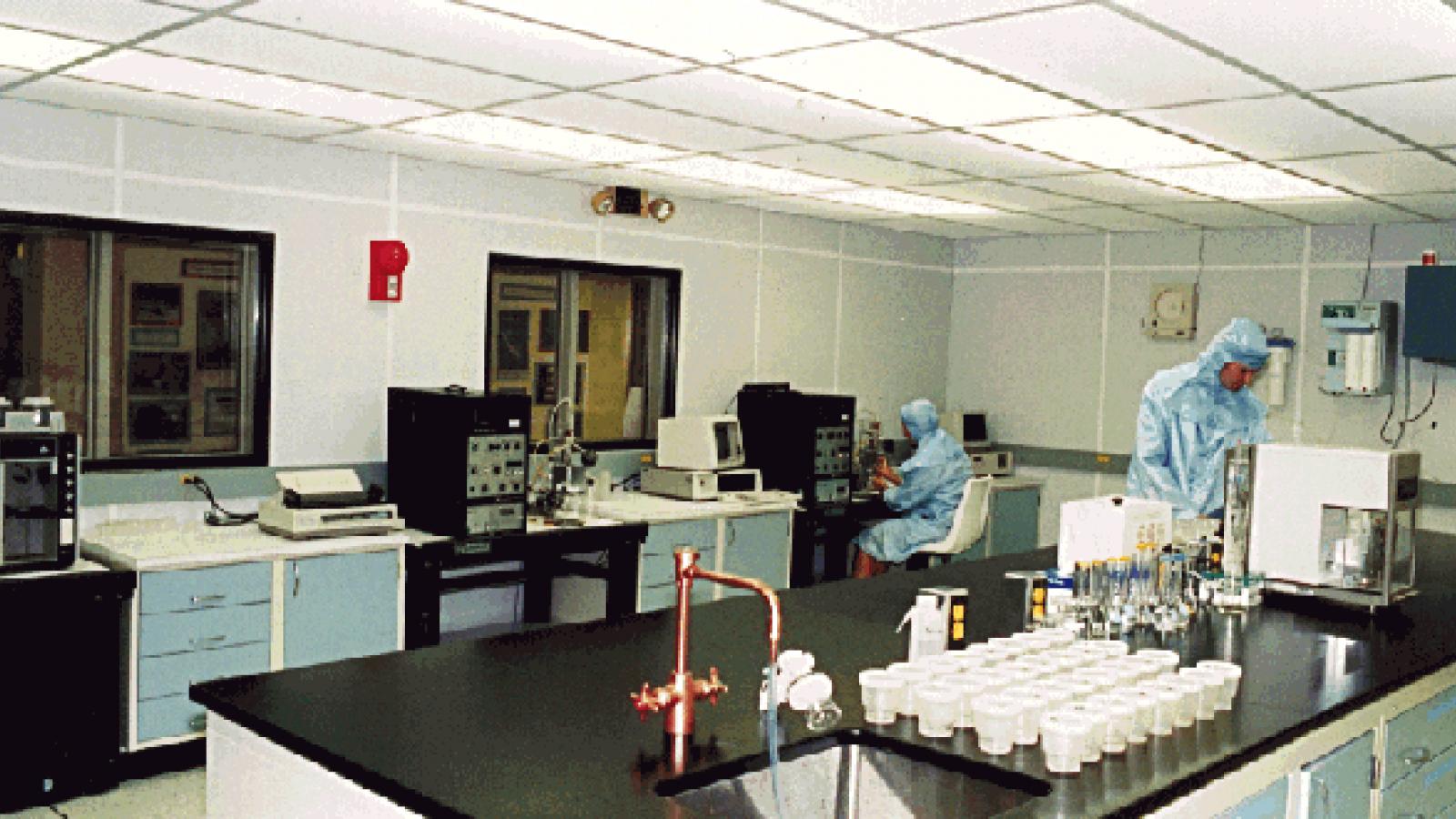The ICPRG maintains two spectroscopy laboratories. One facility houses two cavity ring-down systems: a PICARRO L2120-I for measurement of δ18O and δD and a PICARRO L2140-I for measurement of δ18O, δ17O, δD and 17O-excess. These systems are automated to allow rapid, precise measurements of the stable isotopic composition of the water samples. The second mass spectrometer laboratory houses a Thermo Scientific Element2 ICP-SFMS for determination of a wide spectrum of trace elements. An in-house Milestone digestion system is used for the mineralization of dust samples. The ICPRG has developed and optimized a new melter system for ice core continuous flow analysis. It is coupled to the ICP-SFMS for online trace element determinations and to a fraction collector that obtains discrete clean aliquots.
The ICPRG also maintains a 30' by 40' Class 100 Clean Room, the sole purpose of which is the cleaning and analysis of ice core samples. Proper clean room clothing is worn at all times. Two Millipore water systems (each consisting of a MilliRO-10 and a final Milli-Q polishing system) provide ultra-pure water for cleaning the ice samples and containers. The Clean Room is equipped with two Beckman Coulter Multisizer 4 particle counters that are routinely used to measure the concentrations and size distributions of dust with diameters from 0.63 to 16.0 μm, and two ion chromatographs. The Dionex ICS-3000 IC system is configured with parallel paths for anion and cation analysis and uses the latest version of CHROMELEON software for data acquisition and processing. The Thermo Scientific – Dionex ICS-5000 HPIC (high pressure ion chromatographic) system analyzes major ion concentrations more quickly, performs two separate analyses on a single sample (e.g., anions and cations) and provides higher resolution separations that reduce interferences and produce more accurate data for the analytes of interest. The Clean Room also houses a Droplet Measurement Technologies Single Particle Soot Photometer (SP2) to quantify the mass concentration and size distribution of Black carbon (BC). A Nikon-SMZ-1500 Stereo-microscope with a digital camera and MetaMorph software allows improved particle characterization and higher resolution photography. The ICPRG also maintains a wet lab for Beta sample preparation that also houses a Tennelec Model 2000 low background alpha/beta counter for analysis of Betaradioactivity. Insoluble aerosols that are deposited on treated filters are analyzed to identify horizons containing β-emitting particles from early atmospheric testing of thermonuclear devices.

